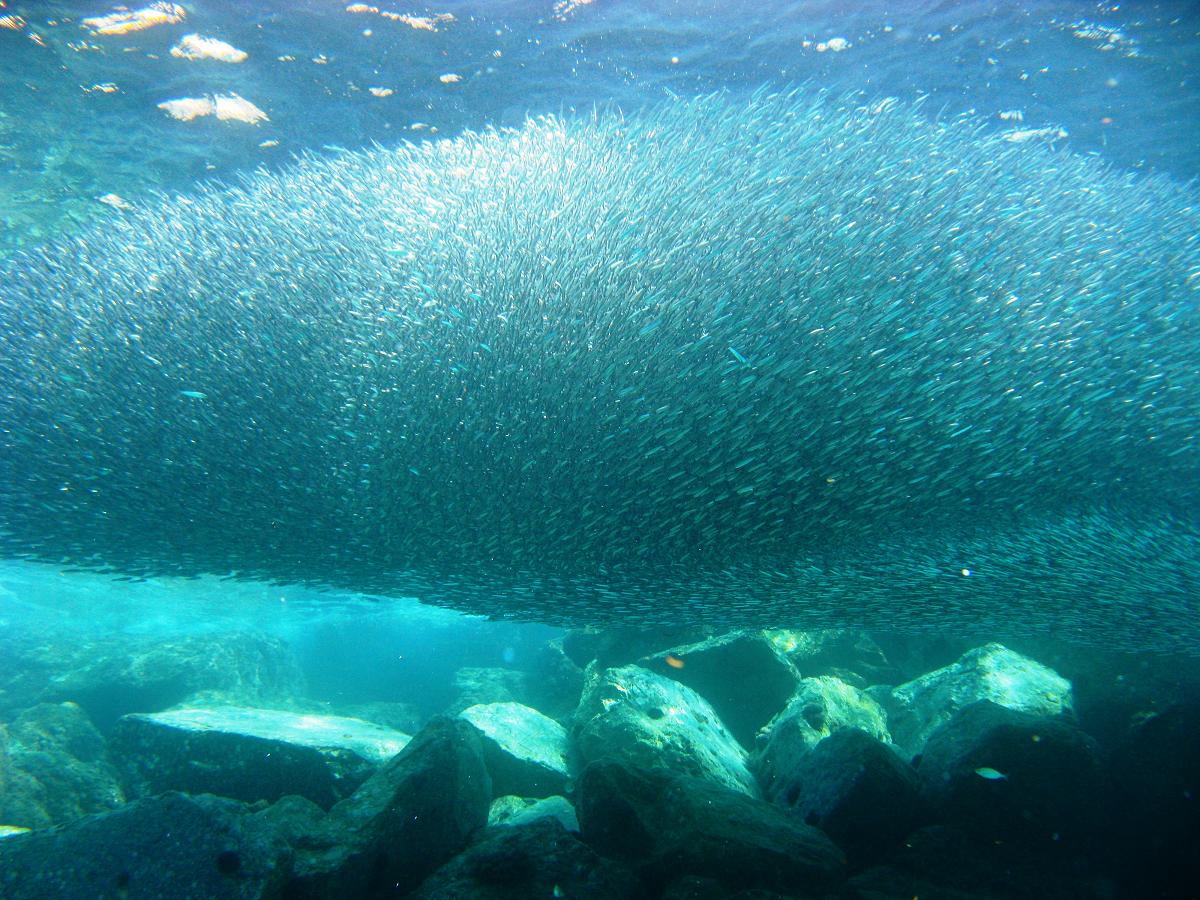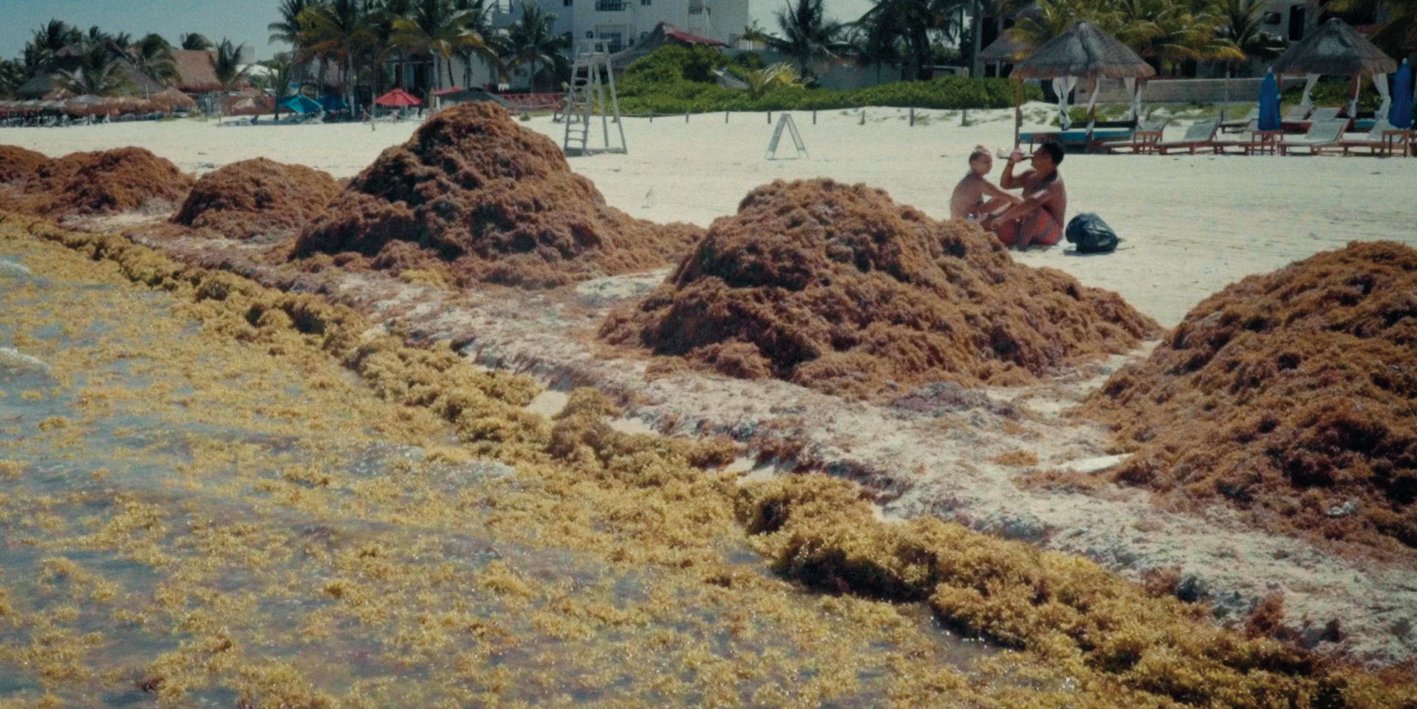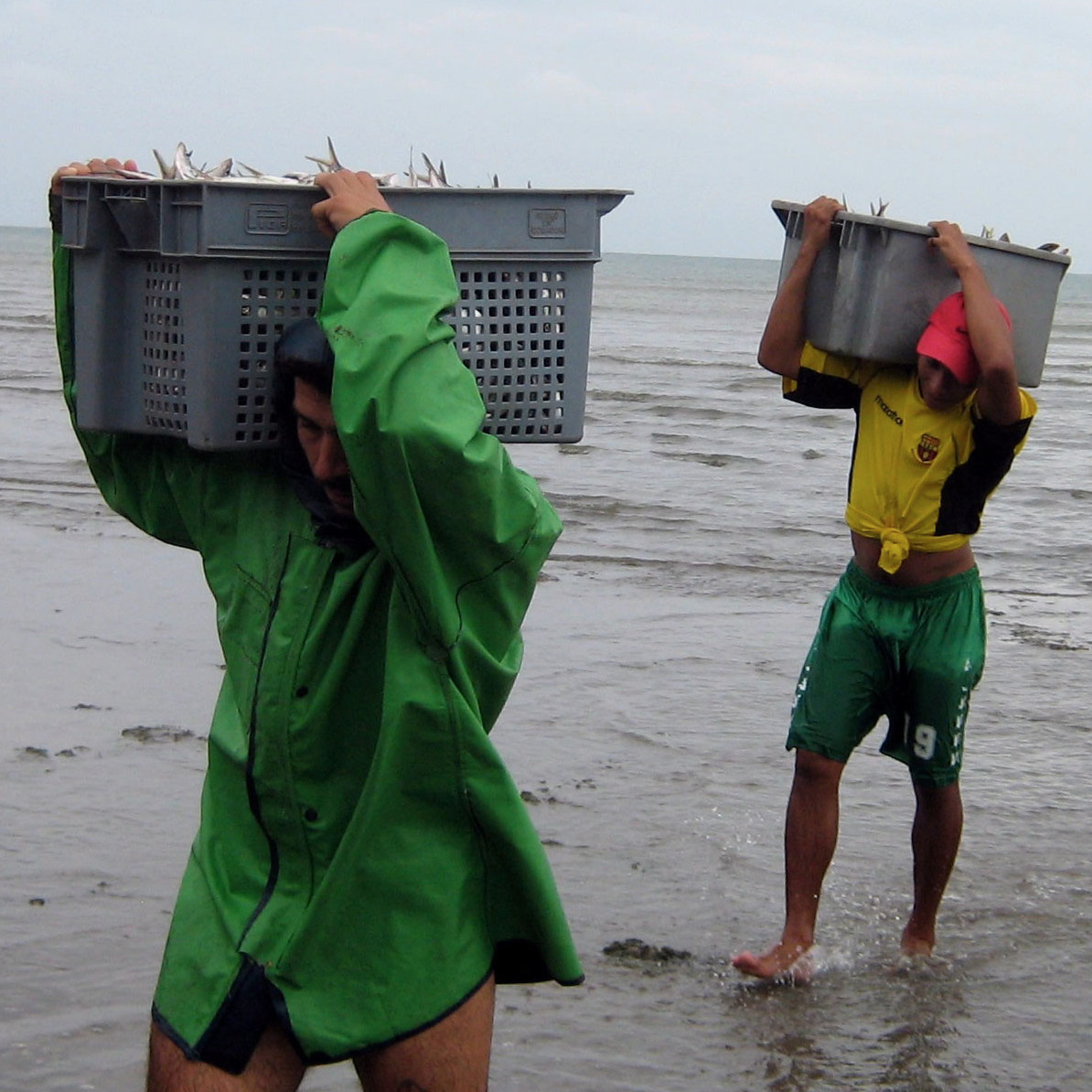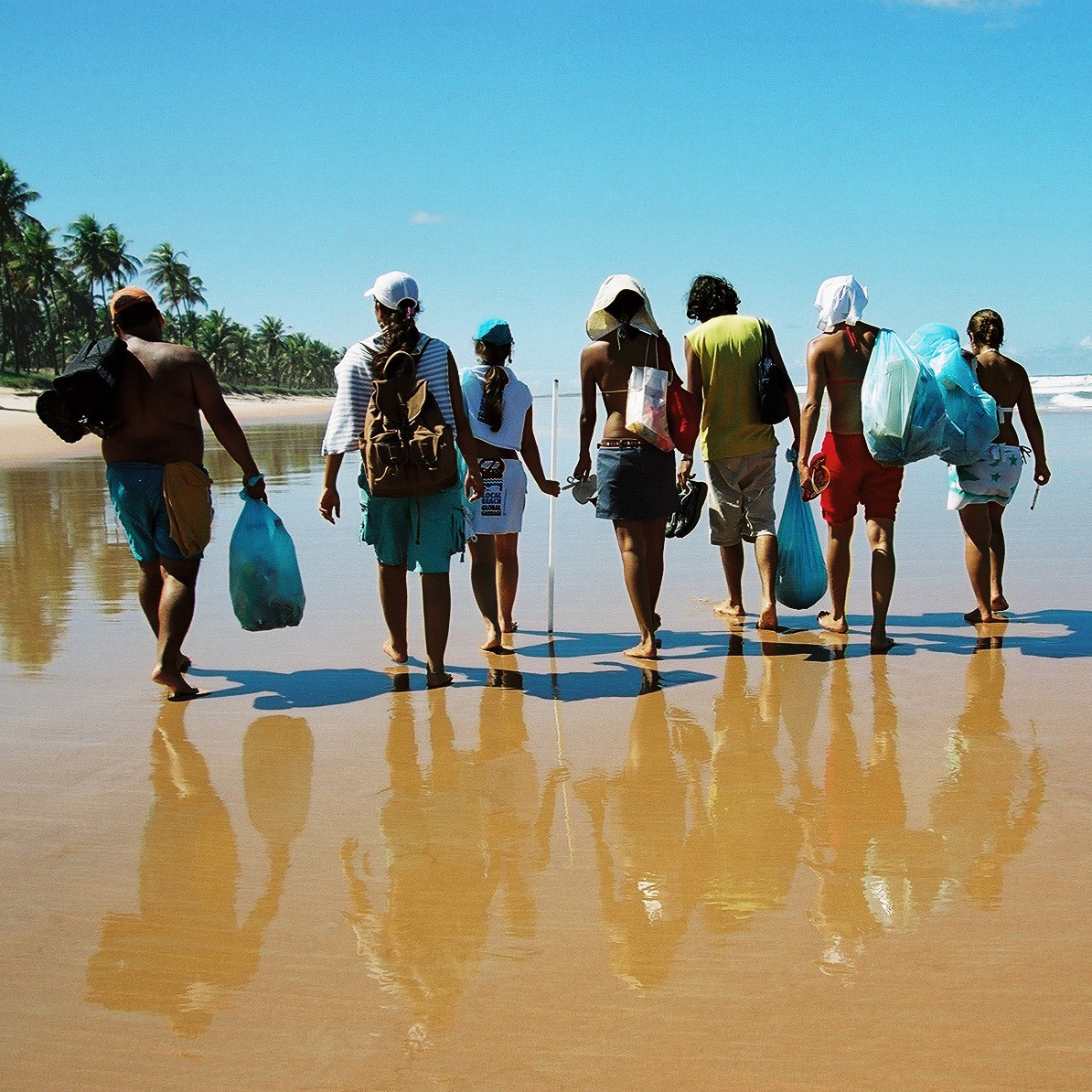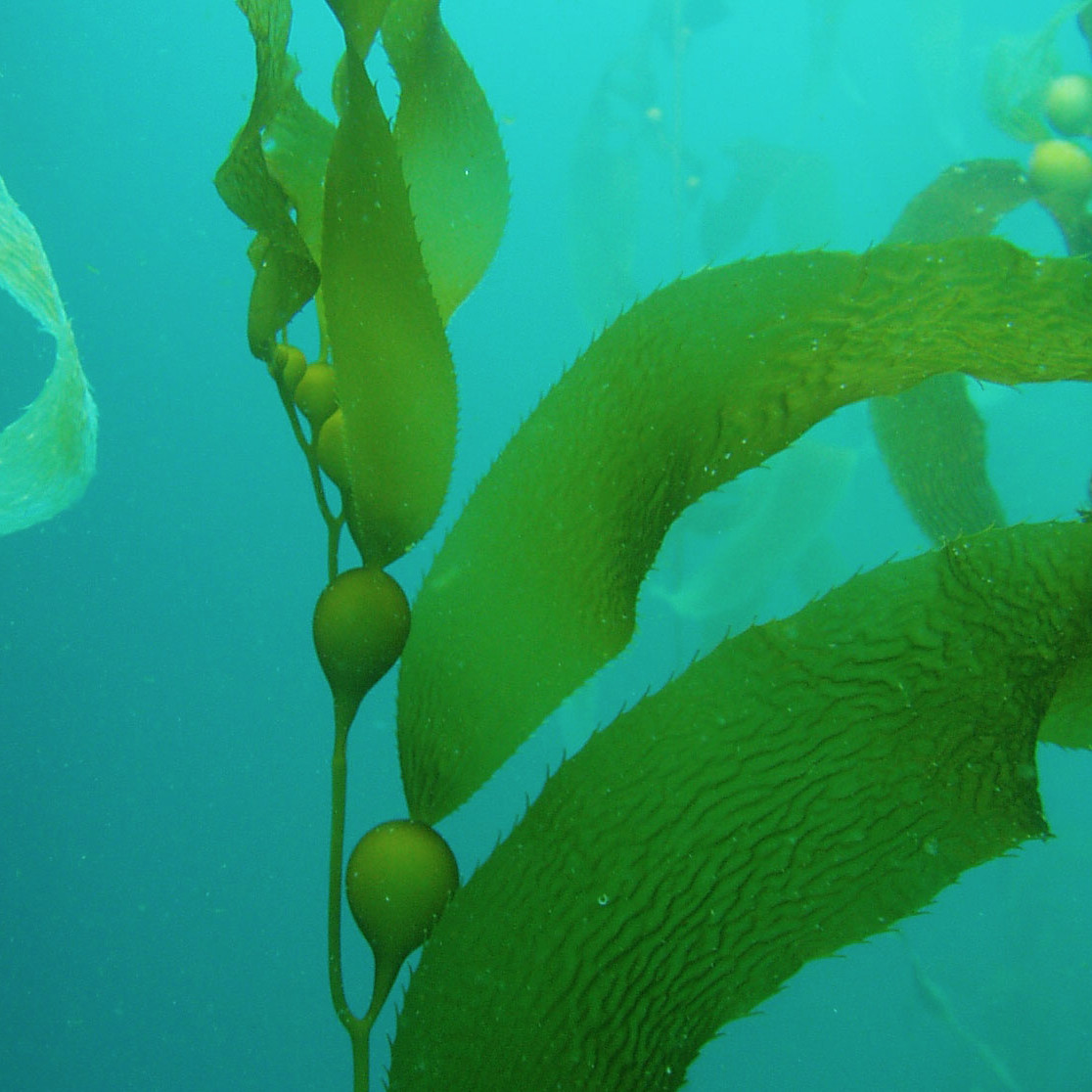
Shelf seas are the coastal waters surrounding every continent, and are typically shallow: in cartography, their boundaries are marked where the water depth around the continental margin exceeds 200 metres. On average, a distance of 70 to 80 kilometres separates the coast from the steep drop into much deeper waters. In the eastern Siberian Chukchi Sea it can be as much as 1,500 kilometres. In shelf seas, the sea floor is ultimately nothing other than the continuation of the continents under water. In the past – during the ice ages when overall water levels were lower – large parts of this land were above sea level.
Around 8 percent of the sea's area is over continental shelves, but the shallowness of these waters mean that they account for only 0.2 percent of global sea water. Yet 99 percent of the world's fish yield comes from these shallow seas, and two-thirds of all humans live in a 60-kilometre strip along the world's coasts. It is the part of the sea which is most severely affected by human action.
Nutrients from dry land and the deep ocean
The extent, incline and geology of the continental terrace is determined by numerous factors, including tectonic activity in the earth's crust. Granted, the waters of the marginal seas originate from the adjoining open oceans, but the proximity of the continents and the tidal flows exert a very substantial influence on living conditions for marine animals and plants in the shallow waters.
The sediments are generally coarser and more diverse than in the deep ocean. They are partly biological in origin, and partly the product of erosion of the neighbouring continent. On a worldwide comparison, a small number of mainly tropical rivers are responsible for transporting most sediment from on land into the sea: more than 80% of river-borne sediment is deposited in tropical waters, and just two river systems, the Huang He or Yellow River and the Ganges-Brahmaputra rivers, are responsible for an estimated 40% of this.
Soft, unvegetated soil is probably the most widespread habitat of the shelf seas, even though sea grass and algae carpets occupy significant areas. Coral reefs undoubtedly rank among the most spectacular habitats of tropical shelf seas, and are most commonly situated where no significant amounts of terrigenous sediments are transported.
Influxes of freshwater from rainfall and rivers, or high evaporation caused by strong solar radiation, influence the salinity and density of seawater. Furthermore the water temperature can be subject to strong fluctuations or extreme highs and lows at certain seasons of the year, and the action of the wind can – typically in shelf seas – cause intermixing of the water right down to the sea floor.
Nutrients from dry land and the deep ocean
Inflowing water from rivers and air currents both transport nutrients and trace elements which are especially beneficial for the development of plant life in the illuminated upper layers of water. This, in turn, forms the food base for the abundance of fish in the shelf seas. However, excessive discharges of nutrients into the sea, originating mainly from private households, agriculture and traffic, are problematic because they lead to unduly high fertilizer content (eutrophication) of the waters. This results in mass developments of planktonic and benthic algae, which exceed the ecosystem's decomposing capacity and drastically alter the marine biotic community.
The land and the atmosphere are not the only sources of nutrients entering the coastal seas. On the western sides of the continents, in the large upwelling regions, nutrient-rich cold water rises to the surface from a depth of around 300 metres along the shelf edge. This is where the production of phytoplankton reaches its highest level in the whole of the open seas, even exceeding the level found in the shelf seas.
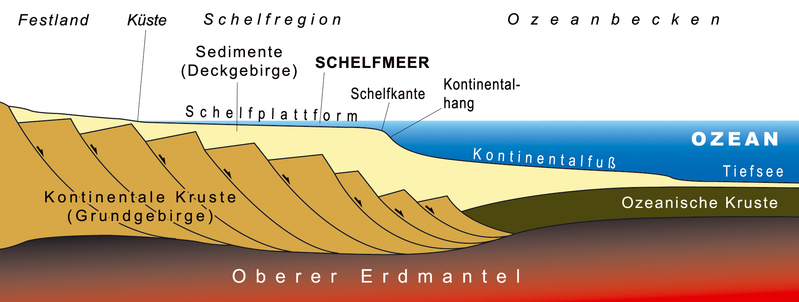
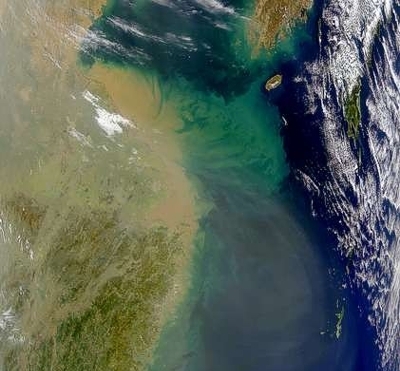
Typical representatives
Phytoplankton:For some species of phytoplankton, the preferred habitat is in the oceanic zone, away from the coast. Others tend to stay in the neritic zone, close to the coast, and yet others thrive in both zones. The phytoplankton in the shelf seas are dominated by silica algae (diatoms), whereas in tropical and subtropical waters, dinoflagellates are more significant. In the temperate latitudes, dinoflagellates often follow the diatoms as the year progresses.
Dinoflagellates are some of the most adaptable organisms because they not only use photosynthesis but can also consume organic particles directly, blurring the boundary between phytoplankton and zooplankton. When they bloom, some species cause red water discolouration known as 'red tides'. These are feared for their toxic effects on fish, and their toxins can also accumulate in shellfish. But other dinoflagellates such as Noctiluca miliaris are responsible for the fascinating phenomenon of marine bioluminescence.
Zooplankton:Of the zooplankton, probably the most significant group of animals are the copepods and cladocera, which are classified as crustaceans and spend their entire life cycle in the plankton. Near the coasts, in particular, the larvae of bottom-dwelling organisms are found in significant numbers: the nauplii of barnacles (Cirripedia), for instance, or the different stages of diverse crustaceans which only classify as zooplankton for one phase of their life cycles. Many jellyfish are meropelagic forms like these. As with the phytoplankton, among zooplankton species there are some which prefer either neritic or oceanic habitats, and some which occur in both zones.
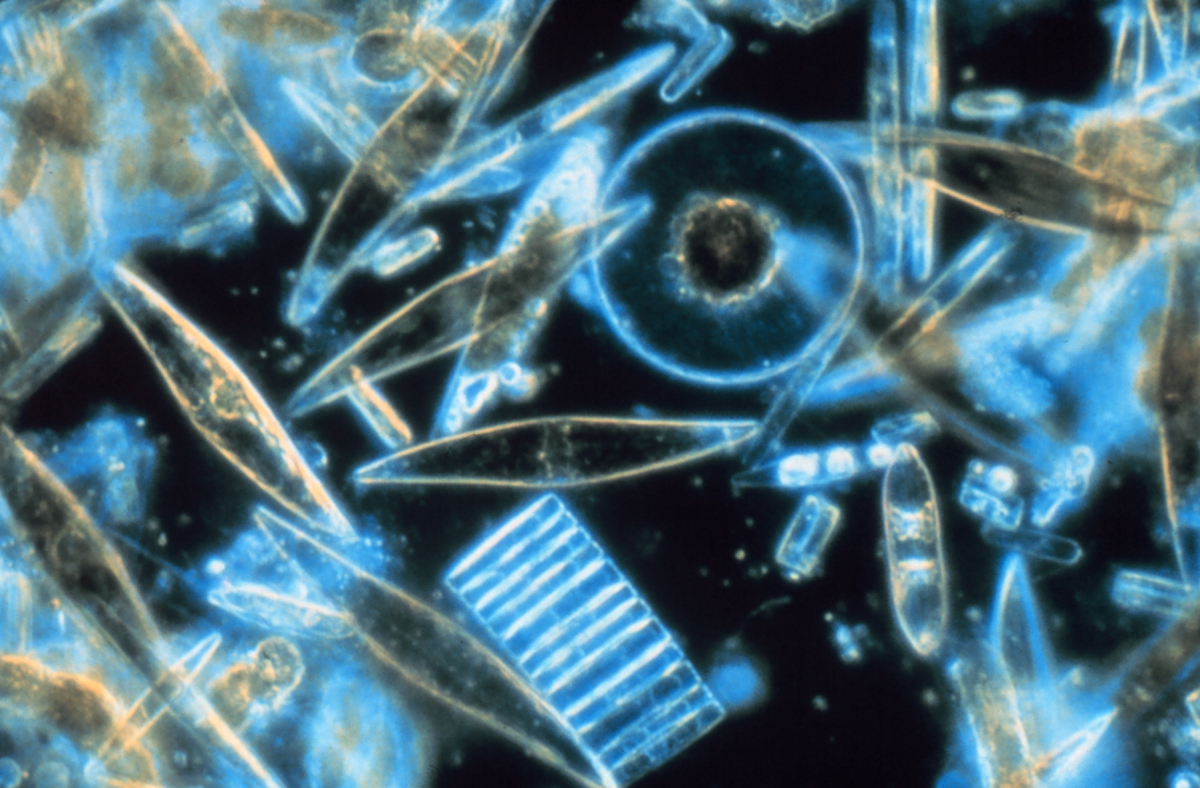
Nekton:Apart from fish, other actively swimming creatures like squid, turtles and mammals form the nekton, which is capable of locomotion through the water against the drift of currents. Many species engage in extensive migrations during the course of their lives, not only horizontally between the neritic and oceanic zones, but also vertically between shallower and deeper areas of the sea. These migrations have been well studied, particularly in relation to the important fishery species, such as cod, haddock, herring and mackerel. Migrations are frequently associated with reproduction, when spawning, rearing and feeding grounds are located far apart.
The number of bottom-dwelling fish species is around ten times higher than those living in the open water (pelagial). The most highly specialised for life on the bottom are fish like skate and flounder, by virtue of their flattened bodies with eyes on the upper side only. Most fish of the upper layer of water (epipelagial) have a streamlined body form and are fast swimmers. Plankton-eaters such as herrings and anchovies form large shoals, which is certainly advantageous in the unprotected open water. But certain predatory fish such as mackerel or tuna are also shoal fish.
Short food chains
Because of their abundance of nutrients, the shelf seas are around two to five times more productive biologically than the open ocean. During the growth phase, the intake of nutrients and trace elements by phytoplankton reduces their concentrations, which initially restricts the growth of the population. Of course, part of the phytoplankton is consumed by zooplankton, fishes, and whales. In their excretions, new nutrients are released back into the light, euphotic zone, where they can be reused.
With the dying plankton, the nutrients finally fall to the sea floor where they form the food base for bottom-feeding organisms such as bacteria, sponges, shellfish, sea squirts and others. These bottom-dwelling organisms convert the falling material by a process called remineralisation, and new nutrients are taken back into the water column by the current. Since most of the remineralisation takes place on and in the sediment, the proximity of the sea floor to the productive euphotic zone is an important difference from the situation in the deep oceans.
Hence, in comparison to conditions in the open ocean, food chains in the shelf seas are rather short. The most important producers are diatoms (silica algae) and dinoflagellates, which are mainly eaten by copepods and cladocera. These, in turn, are prey for raptorial zooplankton like comb jellyfish (Ctenophora) or plankton-eating fish such as herring, anchovies and sardines. So it is only a three-step progression to these fishable populations. The food chain can be even shorter in upwelling zones like the regions off the coast of Peru, where anchovies feed directly on colony-forming phytoplankton.

